10 Unusual Plants to Grow Indoors & Out for Unique Texture
I’ll never forget the first time I spotted a Lamb’s Ear plant at my local nursery.
I was drawn to this silvery, impossibly soft cluster of leaves that looked like they belonged in a fairy tale rather than a garden bed.
When I reached out to touch it (okay, I’m definitely a plant toucher—aren’t we all?), I was amazed by how velvety it felt.
That moment sparked my obsession with textural plants, and honestly, it completely changed how I approach both my indoor plant collection and outdoor garden spaces.

Texture in plants is like the secret ingredient that transforms any space from “nice” to “wow.”
While we often focus on colors and sizes, it’s those unexpected textures—fuzzy, waxy, spiky, or ridged—that make people stop and really notice your plants.
What Are Textural Plants and Why Should You Care?
Textural plants are simply plants that have interesting, unusual, or striking surface qualities that make you want to reach out and touch them.
Think beyond your typical smooth-leafed houseplants, we’re talking about plants with fuzzy surfaces, bumpy stems, waxy coatings, or dramatic ridges.
These plants serve as natural conversation starters and focal points.
In my opinion, they’re the difference between a plant collection that looks “put together” and one that feels truly curated and interesting.
They also photograph beautifully (hello, Instagram-worthy plant corners!).
How to Choose the Right Textural Plants for Your Space
Before we dive into my top picks, here’s how I decide which unusual plants to bring home:
- Consider your lighting conditions (bright indirect, low light, full sun)
- Think about your care commitment level (some textural plants are surprisingly low-maintenance)
- Match the plant’s mature size to your space
- Consider whether you want indoor, outdoor, or plants that can do both
Now, let’s get to the fun part: my favorite unusual textural plants that’ll make your space absolutely stunning!
1. Lamb’s Ear (Stachys byzantina) – The Ultimate Fuzzy Friend

Picture the softest fabric you’ve ever touched, then imagine it growing in your garden. That’s Lamb’s Ear for you! These silvery-gray leaves are covered in tiny hairs that create the most incredible velvety texture.
Where to grow it: Outdoors in most climates (zones 4-8), or in containers you can move indoors during harsh winters
Care tips:
- Loves full sun to partial shade
- Drought-tolerant once established (perfect for beginners!)
- Cut back flower spikes if you want to keep the focus on those gorgeous leaves
Pro tip: These leaves look absolutely stunning in flat lay photos with other natural textures like wood and linen.
2. Burro’s Tail (Sedum morganianum) – Living Jewelry

If you’ve ever seen those chunky, trailing succulent “braids” all over Pinterest, you’ve met Burro’s Tail. Each stem is covered in plump, blue-green leaves that overlap like scales, creating this incredible rope-like texture that looks almost too perfect to be real.
Where to grow it: Indoor hanging baskets or outdoor containers in warm climates
Care basics:
- Bright, indirect light (direct sun can scorch those beautiful leaves)
- Water only when the soil is completely dry
- Handle gently, those leaves drop off easily (but good news: they’ll root and make new plants!)
My favorite styling trick: Hang them at different heights to create a cascading garden wall effect.
3. African Violet (Saintpaulia) – Velvet Royalty

Don’t let the name fool you—these aren’t your grandmother’s boring houseplants.
African Violets have the most incredible fuzzy, almost suede-like leaves that feel luxurious to touch.
Plus, when they bloom, you get these perfect little flowers as a bonus.
Indoor growing made easy:
- Bright, indirect light (east-facing windows are perfect)
- Water from the bottom to avoid getting those fuzzy leaves wet
- Keep them slightly root-bound for better blooming
Styling note: Group different varieties together for a textural garden that photographs beautifully.
4. Jade Plant (Crassula ovata) – Glossy Perfection
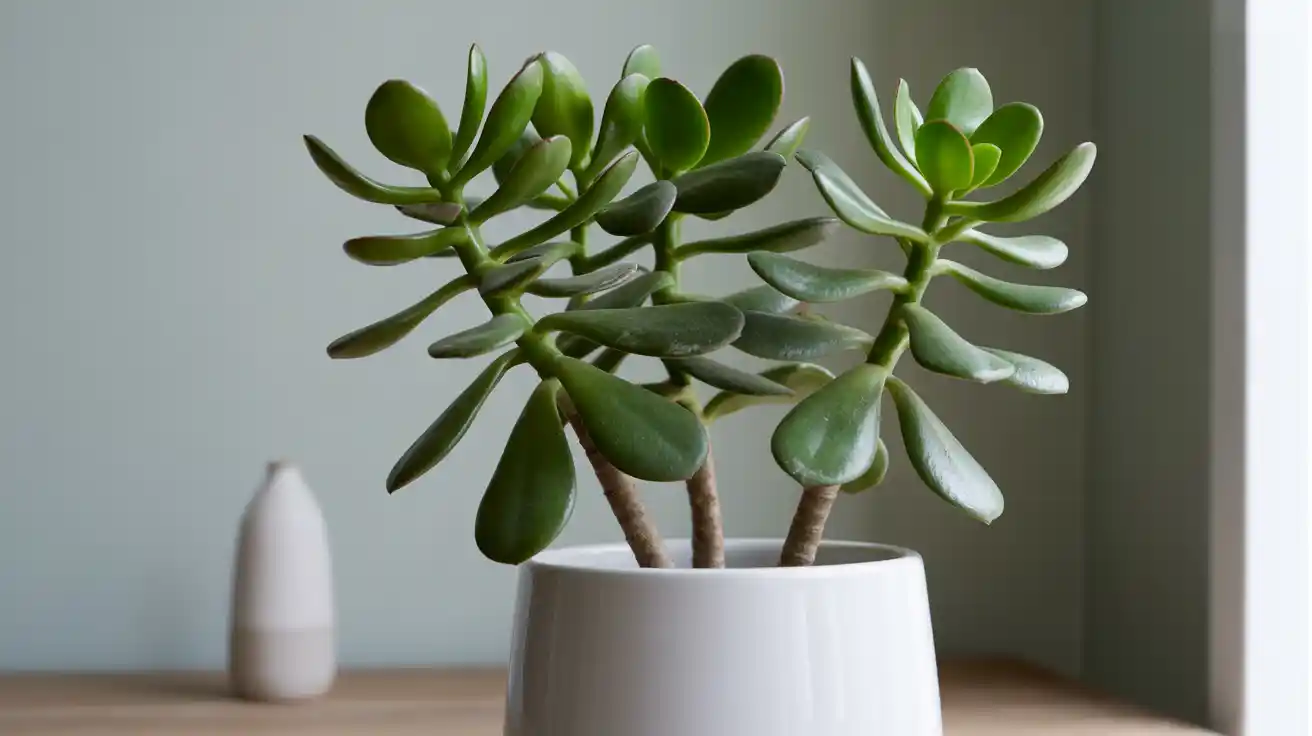
Jade plants have this incredible waxy, glossy texture that makes them look almost artificial (in the best way possible).
Their thick, succulent leaves catch light beautifully and feel cool and smooth to the touch.
Why I love them:
- Virtually indestructible (perfect if you’re still building your plant confidence)
- Can live indoors or outdoors, depending on your climate
- Develop character and personality as they age
Growing tips:
- Bright light (they can handle some direct sun)
- Let the soil dry completely between waterings
- Pinch growing tips to encourage bushy growth
5. Hens and Chicks (Sempervivum) – Architectural Rosettes

These little rosette succulents have the most satisfying geometric texture; each leaf is thick and pointed, creating these perfect spiral patterns that look like living mandalas.
They come in incredible color variations, too, from deep burgundy to silvery green.
Perfect for: Rock gardens, container arrangements, or anywhere you want architectural interest
Super low-maintenance care:
- Tolerates neglect beautifully
- Spreads naturally to create colonies (hence the “hens and chicks” name)
- Hardy in most climates
6. String of Hearts (Ceropegia woodii) – Delicate Chain Mail
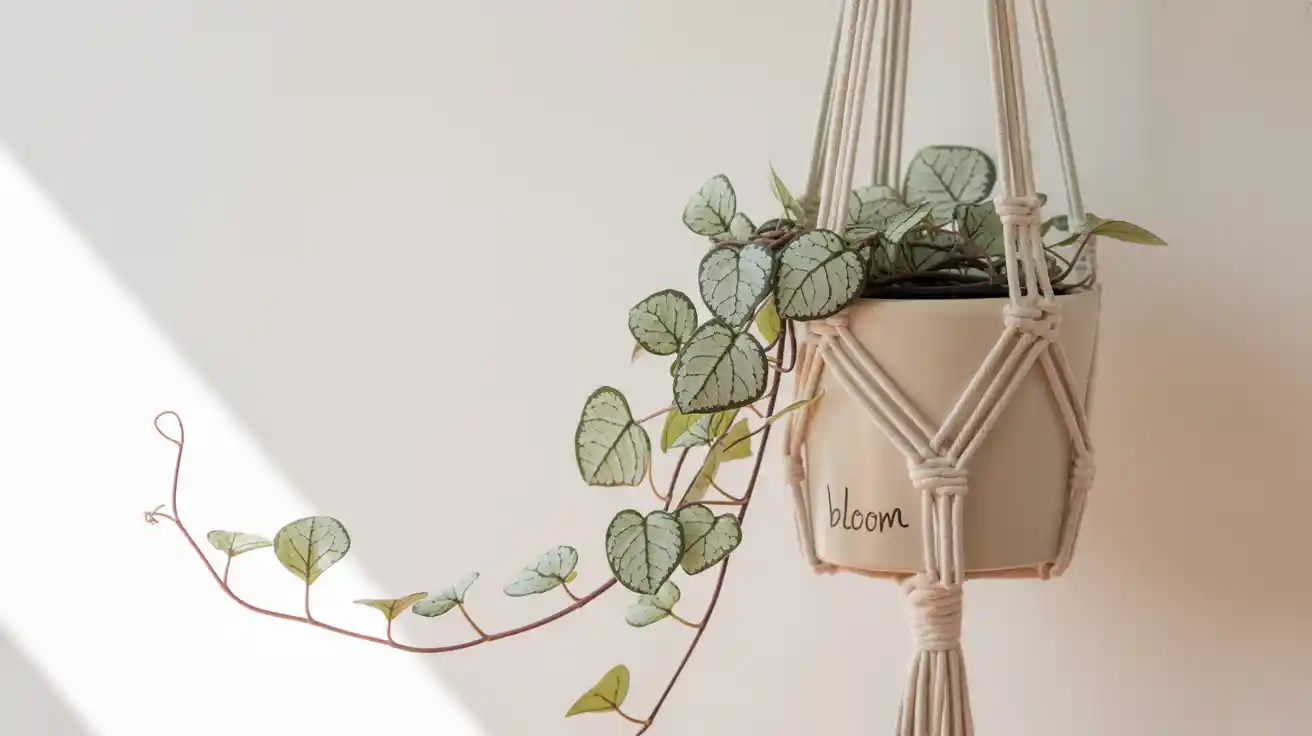
Picture tiny heart-shaped leaves strung along thin, trailing stems like the most delicate jewelry.
The leaves have this interesting waxy texture with beautiful marbled patterns that make each one unique.
Indoor trailing beauty:
- Thrives in bright, indirect light
- Let the soil dry between waterings
- Propagates easily from cuttings (perfect for sharing with friends!)
Design idea: Let them trail from floating shelves or plant stands for instant boho vibes.
7. Prickly Pear Cactus (Opuntia) – Desert Drama
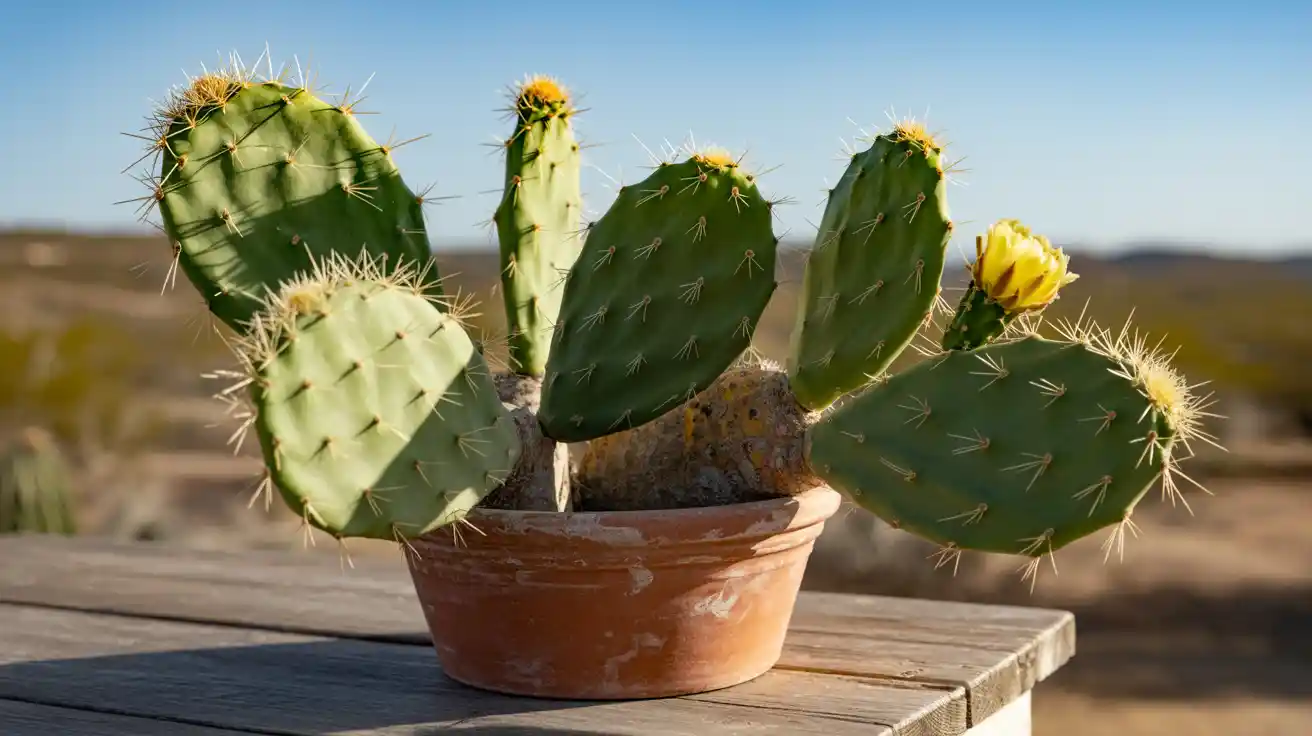
If you want serious textural impact, few plants deliver like a Prickly Pear. Those flat, oval pads (called cladodes, if you want to get technical) have this incredible waxy surface punctuated by clusters of spines that create amazing shadow patterns.
Growing considerations:
- Full sun outdoor locations or very bright indoor spots
- Extremely drought-tolerant
- Some varieties are cold-hardy, others need protection
Safety note: Always use thick gloves when handling—those tiny glochids (small spines) are sneaky!
8. Polka Dot Plant (Hypoestes phyllostachya) – Soft Spotted Wonder

These charming little plants have soft, slightly fuzzy leaves covered in the most adorable spotted patterns.
The texture is gentle and inviting, and the patterns create incredible visual interest up close.
Indoor growing success:
- Medium to bright indirect light
- Keep soil consistently moist (but not soggy)
- Pinch flowers to keep energy focused on those beautiful leaves
Color variations: Pink, white, red, or silver spots—collect them all for a textural rainbow!
9. Snake Plant (Sansevieria trifasciata) – Architectural Leather
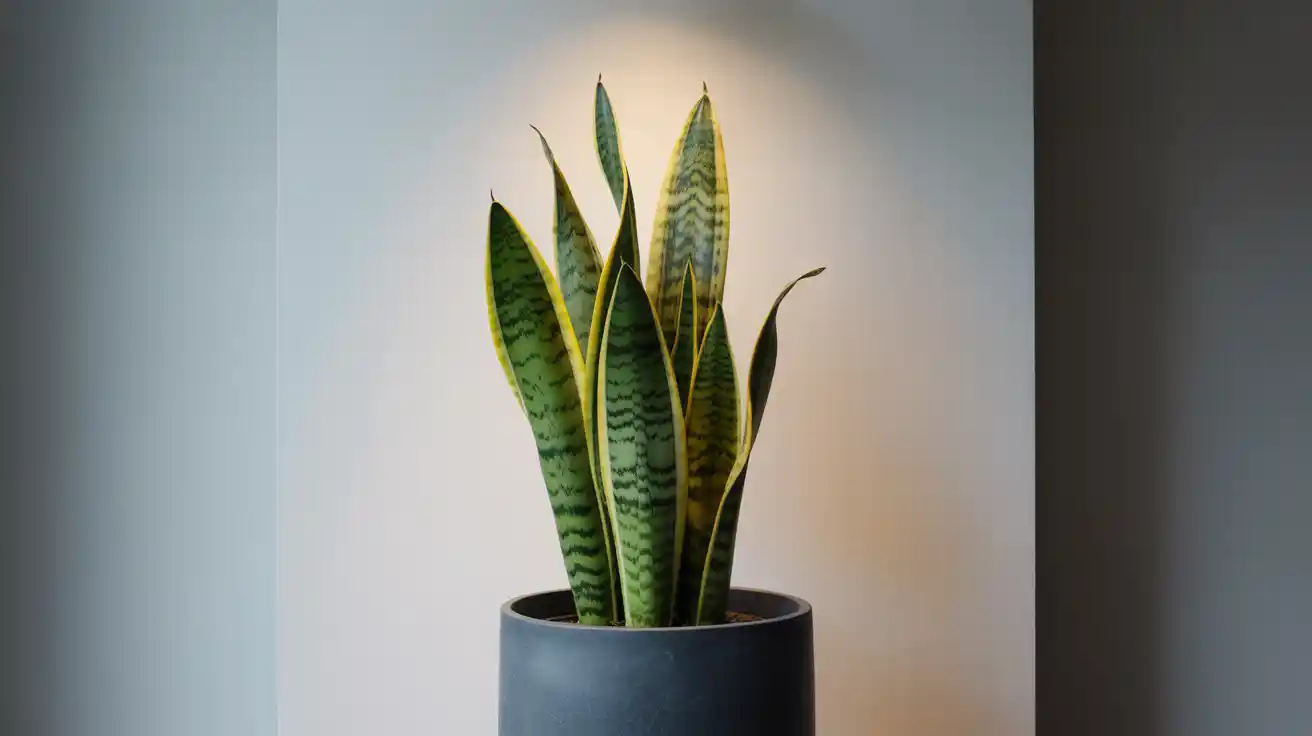
Snake plants have this incredible, thick, leather-like texture that’s both smooth and substantial. The leaves stand upright like living sculptures, and many varieties have beautiful patterns or variegation that adds visual texture too.
Why they’re perfect for everyone:
- Tolerates low light and neglect
- Air-purifying qualities
- Architectural presence that photographs beautifully
Styling tip: Use them as living room sculptures in modern planters for maximum impact.
10. Ponytail Palm (Beaucarnea recurvata) – Whimsical Texture Combo

This quirky plant combines multiple textures in one: a bulbous, bark-textured base that stores water, topped with long, thin leaves that cascade like—you guessed it—a ponytail.
It’s like nature’s own sculptural masterpiece.
Easy care highlights:
- Bright light but adapts to lower conditions
- Water sparingly (that bulbous base stores water)
- Perfect conversation starter plant
Tips for Success with Textural Plants
Here are my tried-and-true strategies for keeping these unique beauties happy:
Research before you touch: Some plants (like certain cacti) don’t appreciate handling, while others (like Lamb’s Ear) seem to love the attention.
Group for impact: Combine different textures in the same area for maximum visual interest. Picture a smooth jade plant next to a fuzzy African violet—the contrast is stunning.
Consider the whole year: Some outdoor textural plants look amazing in winter too (like ornamental grasses with frost on them).
Photography lighting: If you’re planning to share your plant journey on your social media profiles, textural plants shine in natural light where shadows can highlight their unique surfaces.
Where to Find These Textural Treasures
Local nurseries often have the best selection and can give you region-specific growing advice.
Online plant retailers are great for harder-to-find varieties, and plant swaps or local plant groups are perfect for trying new textures without breaking the budget.
Seasonal Considerations for Your Region
Here in most temperate zones, spring and fall are ideal for establishing new plants.
Summer can be tough on newly planted specimens (especially fuzzy-leafed ones that can get heat stress), while winter is perfect for planning your textural garden expansion.
If you’re in a warmer climate, you have the luxury of growing many of these outdoors year-round.
Cold-climate gardeners (like me!) can enjoy most of these as houseplants or container plants that move indoors for winter.
Your Textural Plant Journey Starts Now
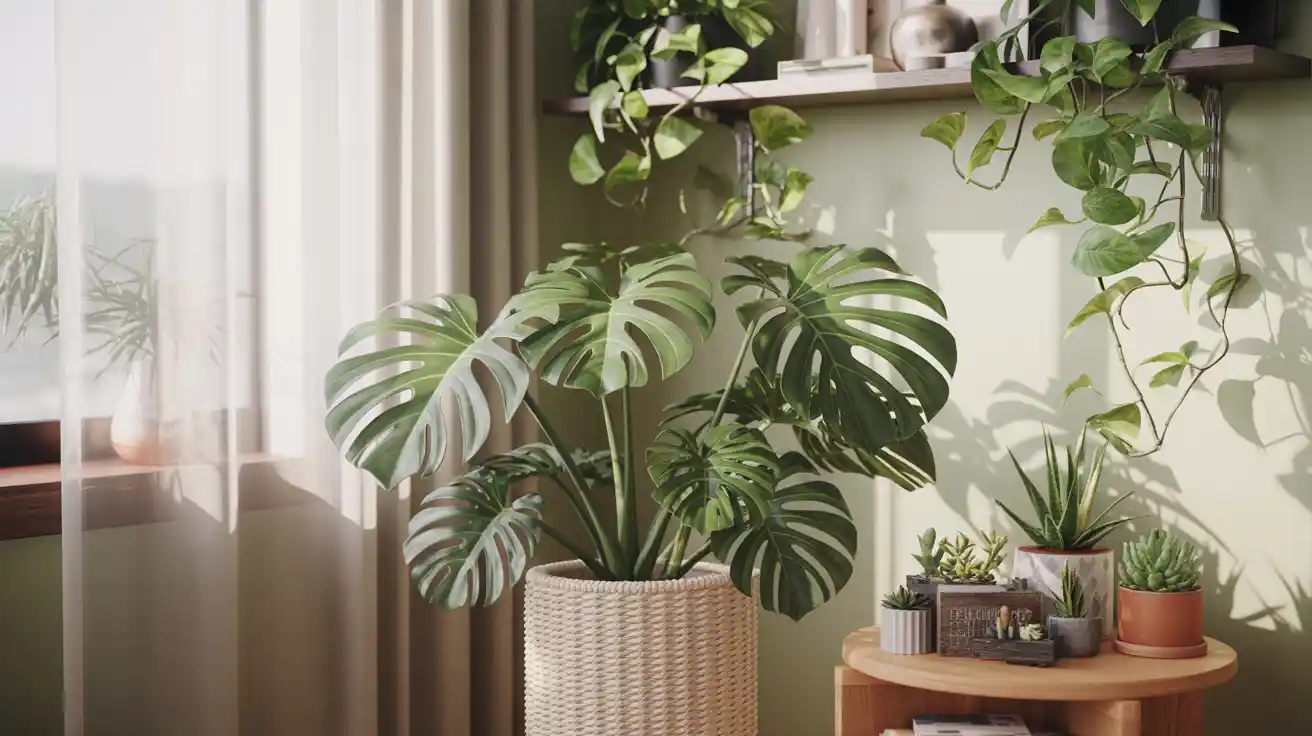
Adding textural plants to your space isn’t just about following a trend—it’s about creating environments that engage all your senses and make every day a little more interesting.
Whether you start with one fuzzy Lamb’s Ear in your garden or create an entire indoor jungle of varied textures, these plants will transform how you experience your space.
My advice? Start with one plant that speaks to you (maybe that incredibly soft African violet or architectural snake plant), learn its needs, and let your confidence grow along with your collection.
Trust me, once you go textural, there’s no going back, and your spaces will thank you for it!
